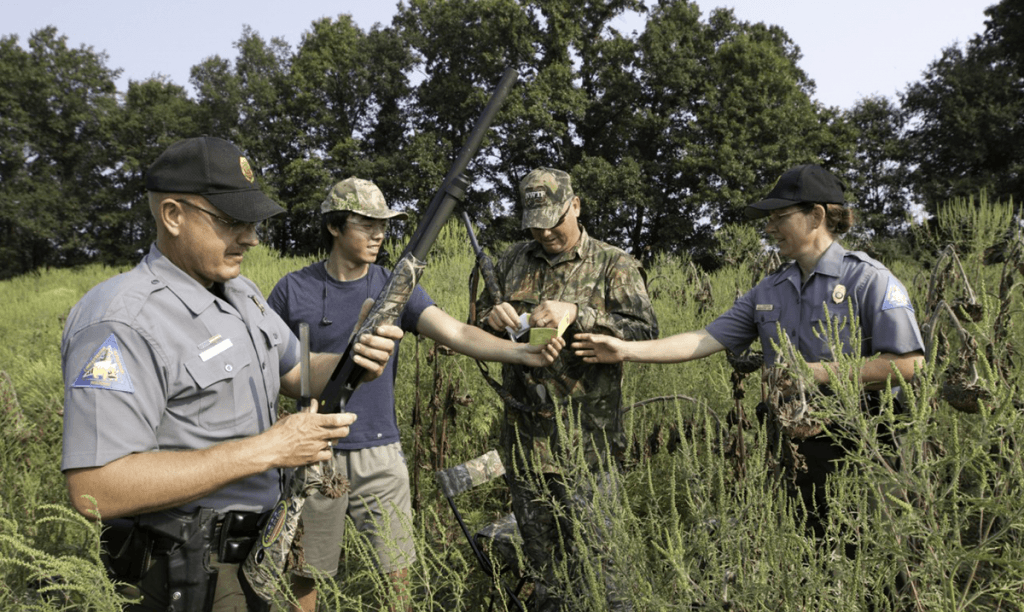
Fish & Wildlife Agencies Use Mentored Dove Hunts to Introduce People to Hunting
By Michael Pendley
According to the U. S. Fish and Wildlife Service, hunting license sales in the United States peaked in 1982, with around 17 million hunters purchasing a little over 28 million hunting licenses. Data from 2016, the most recent available, shows that number closer to 11 million. Since most state DNR and game and fish departments depend on hunting license sales for their day-to-day operating budget, that downward trend has their attention.
Not only do these agencies need the income from license sales, but the amount of money they receive in federal grants through the Pittman-Robertson Act is based directly on the amount of taxes taken in on firearms, ammunition and hunting equipment sold to American consumers. The more hunters out there buying gear, the more money available from the fund.
The answer, obviously, is to get more folks afield. But how? For many departments, that answer lies in a game animal that doesn’t get a lot of publicity.
Little Bird, Big Results
Mentored dove hunts are springing up around the country as a way to introduce new people to the sport, and state agencies are going out of their way to make them possible.
Why dove hunting? For starters, unlike turkey and big-game hunting, doves don’t require a lot of specialized gear. Just about any shotgun style, a few inexpensive boxes of shells, a jug of cold water to drink and something to sit on is about all it takes for a successful day in the dove field.
Too, for most states, dove hunting takes place in late summer or early fall, making the weather inviting for someone not used to spending hours in the cold. The fact that dove hunting is more of a social event than the solitary waiting for other game animals helps as well.
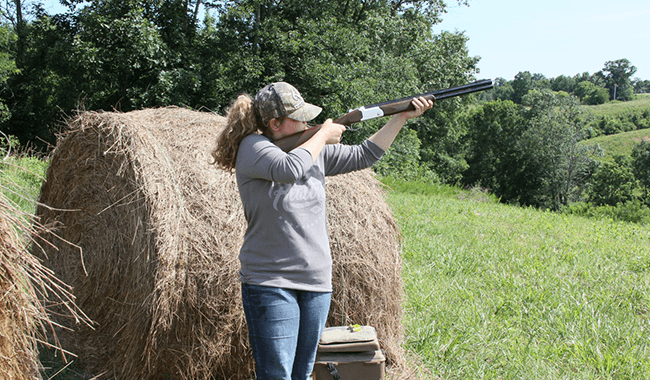
Then there’s the shooting itself. The fast-paced action and frequent shot opportunities of a good dove field keep newcomers interested and tuned in to the hunt. A miss is quickly forgotten as the next bird flies by in range. Doves also make great table fare, appealing to those new hunters who have taken up the sport in search of clean, organic meat for the family table.
To make the hunts attractive to new hunters and mentors alike, state agencies are doing things like planting fields of sunflower, millet or other grain on public lands to attract doves. Often, these fields are limited to mentor hunts for the first several days of the season. That’s important because knowing they are afield with other new hunters helps ease the worry of newcomers to the sport who might otherwise feel intimidated in a field full of seasoned veterans.
Adjusting to a Changing Hunter
One agency that has embraced the mentored dove hunt idea is the Ohio Department of Natural Resources (ODNR). Its program offers special hunting areas to mentor/mentee pairs. The mentor must be at least 21 years old and hold a valid Ohio hunting license. The new hunters can be any age, as long as they have either never possessed an Ohio hunting license or had previously held an Ohio hunting license or apprentice hunting license but not completed Harvest Information Program (HIP) certification — something necessary for hunting — in the last five years.
Eric Postell, program manager over outdoor education for the ODNR, says the way the department is going about hunter recruitment has changed over the years.
“We aren’t doing the approach to getting as many people as possible together for a large event that used to be so common. Instead, we have implemented the R3 — recruit, retain and reactivate — approach, focusing on more detailed events for smaller groups, say 20 to 30 new hunters. Our hunt clinics now are a complete training course. The participants might spend a day learning about the type of game they are hunting and how to hunt it, get paired with a mentor, then go straight to the field to hunt. After, we help them process their game and show them how to prepare it for a meal,” says Postell.
Postell reports that newcomers to the sport aren’t interested in the same aspects that traditionally attracted new hunters. “Today, with new hunters, it’s all about being a part of the natural cycle, about acquiring food for the table.
“We know Millennials are interested in our programs,” he added. “Our events fill up as soon as we post an opening. What we don’t know is if the new hunters from the clinics are remaining active in the sport.” To that end, the ODNR has recently hired a customer engagement coordinator whose job will be to mine data from the Ohio hunter recruitment programs to see if participants purchase Ohio hunting licenses down the road. “We hope the information gained from this position will help us tailor our recruitment initiatives to fit the most successful examples from our clinics,” says Postell.
The Missouri Department of Conservation (MDC) takes a similar approach. It’s teamed up with the National Wild Turkey Federation (NWTF), Quail Forever (QF), the Missouri Prairie Foundation (MPF), the Conservation Federation of Missouri (CFM) and private landowners to provide mentored dove hunts for first-time hunters on fields across the state. New Missouri hunters can apply for the hunt individually and be paired with a mentor at the field. Each field is limited to two first-time hunters and their mentors per acre to maximize safety and provide a quality experience.
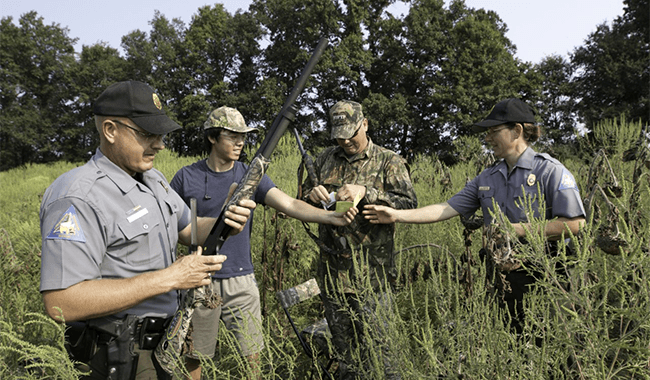
Like the ODNR, the MDC has shifted from concentrating on recruiting youth hunters to providing opportunities that appeal to those of all ages. Justin McGuire, Hunter Education Coordinator for the MDC, says,” We have adjusted existing programs and created new programs to include adult first-time hunters. The Department has worked hard to find a balance between youth- and adult-centered programs, and we’ve put a lot of effort into engaging partner organizations. We hold hunts in conjunction with NGOs and other government agencies such as the Corps of Engineers, and U.S. Fish & Wildlife. This allows all involved entities to share in the cost, labor and positive exposure. Everyone in the industry has a vested interest in recruiting, retaining, and reactivating hunters and shooters, and partnerships allow everyone to provide more efficient, effective programs for participants without unnecessarily duplicating efforts.
“Many of our programs, dove hunts included, focus on recruiting first-time hunters,” McGuire continued. “For those programs, we focus our marketing and restrict our registrations to participants who have never hunted or, at a minimum, have never hunted that particular species. In that way, we’ve been very successful in using our programs to introduce new hunters.”
The Kentucky Department of Fish and Wildlife (KDFWR) is another state agency using mentored dove hunts to attract new hunters. For several years now, the KDFWR has offered these hunts to youths under 16. Adult mentors can take up to two youth hunters afield at a time.
Wes Little, a migratory game bird biologist with the agency, says, “We’ve been partnering with private landowners for years now to plant and maintain dove fields for use by Kentucky’s hunters. We have traditionally reserved several of these fields for mentored youth hunts on the opening weekend of the season.
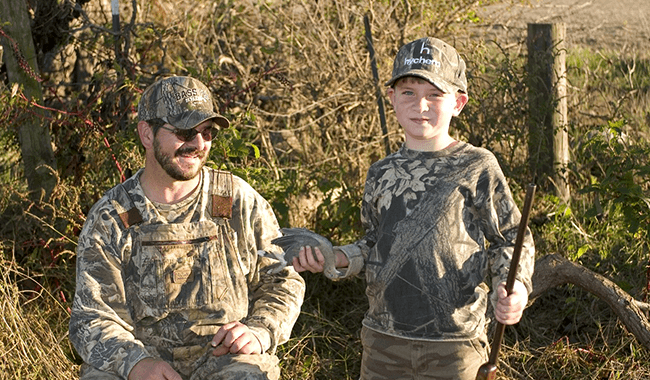
“The department feels these mentored hunts offer young hunters a safe and low-pressure hunt they wouldn’t get in an open public field. We run the hunts from 2:00 to 7:00 p.m. to avoid the hottest part of the day and place the hunters in the field when the doves are most active. After the hunt, many of the landowners offer a picnic for the participants to make it an all-around fun-filled day afield.”
While these youth hunts will continue, Little went on to add that the KDFWR was moving toward attracting young adults to the sport with a new program of mentored hunts.
“New data is pointing to young adult non-hunters as a demographic that responds well to new hunter programs, and so we have started working with our R3 coordinator to offer more mentored hunts for young adults,” he said. “Like the youth hunters, we pair the participants with mentors who can help them with the entire process, from gear selection and the hunt itself to cleaning and preparing their game afterward.”
One Step for New Hunters, One Step for +ONE
For many agencies, these mentored hunts are proving to be a useful tool in the fight to stabilize hunter numbers, and this model is being implemented by these agencies and others to cover additional game species. Best of all these efforts support, both directly and indirectly, the +ONESM Movement. This nationwide NSSF initiative works to encourage experienced target shooters and hunters to take someone new to the range or field and introduce them to the sports they are passionate about, just as someone once introduced them. For more information about the +ONE Movement and to take the +ONE Pledge, visit LetsGoShooting.org and LetsGoHunting.org.
You may also be interested in:
https://www.letsgohunting.org/articles/grilled-dove-poppers/
https://www.letsgohunting.org/articles/doves-the-perfect-youth-hunt/
















 A trail camera is a gift that keeps giving all season long. These compact scouting tools help hunters better understand wildlife movement, feeding patterns and habitat use. They’re also helpful for general property surveillance year-round.
A trail camera is a gift that keeps giving all season long. These compact scouting tools help hunters better understand wildlife movement, feeding patterns and habitat use. They’re also helpful for general property surveillance year-round.
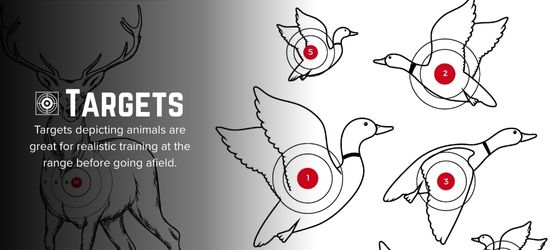 Animal-depicted targets or steel gong plates make training sessions more realistic and engaging before heading afield. Whether practicing archery, handgun skills or sight-ing in a rifle, targets help shooters build confidence and ensure ethical shots on game.
Animal-depicted targets or steel gong plates make training sessions more realistic and engaging before heading afield. Whether practicing archery, handgun skills or sight-ing in a rifle, targets help shooters build confidence and ensure ethical shots on game.
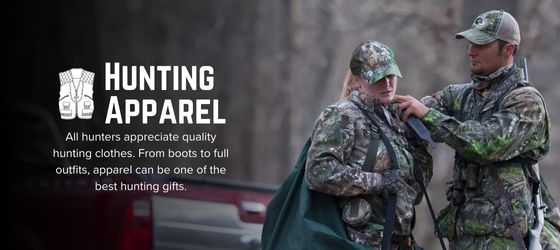 From warm layers to weather-resistant outerwear and high-quality boots, hunters can never have too much reliable clothing. Performance apparel keeps hunters comfortable during long sits and unpredictable weather—something every seasoned hunter can appreciate.
From warm layers to weather-resistant outerwear and high-quality boots, hunters can never have too much reliable clothing. Performance apparel keeps hunters comfortable during long sits and unpredictable weather—something every seasoned hunter can appreciate.
 Good hearing protection is essential, whether at the range or in the field. Gift options range from inexpensive foam earplugs to electronic protection with sound-amplification features that allow hunters to remain aware of their surroundings.
Good hearing protection is essential, whether at the range or in the field. Gift options range from inexpensive foam earplugs to electronic protection with sound-amplification features that allow hunters to remain aware of their surroundings.
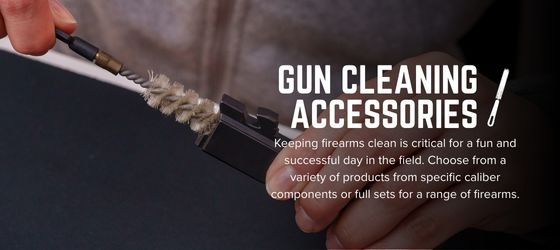 Proper maintenance keeps firearms reliable and safe. Cleaning kits come in all shapes and sizes—from caliber-specific brushes and patches to full multi-caliber sets for hunters with several firearms.
Proper maintenance keeps firearms reliable and safe. Cleaning kits come in all shapes and sizes—from caliber-specific brushes and patches to full multi-caliber sets for hunters with several firearms.
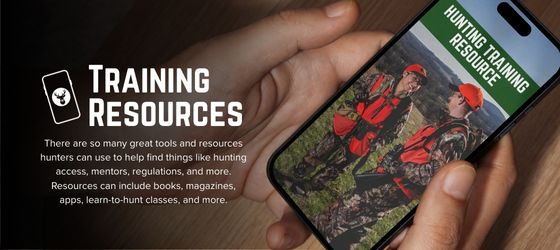 Books, magazines, apps and online tutorials can open the door to new skills and deeper knowledge. You can also gift a registration to a learn-to-hunt class, mentored hunt or range session.
Books, magazines, apps and online tutorials can open the door to new skills and deeper knowledge. You can also gift a registration to a learn-to-hunt class, mentored hunt or range session.
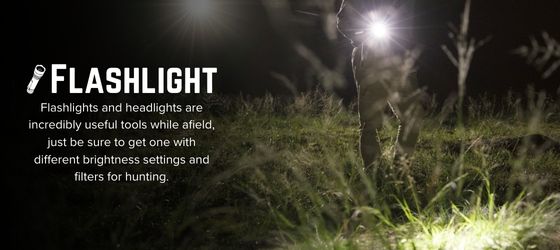 A dependable headlamp or flashlight is a must-have for walking in before sunrise or navigating out after dark. Look for models with adjustable brightness settings and colored filters (like green or red) to avoid spooking game.
A dependable headlamp or flashlight is a must-have for walking in before sunrise or navigating out after dark. Look for models with adjustable brightness settings and colored filters (like green or red) to avoid spooking game.
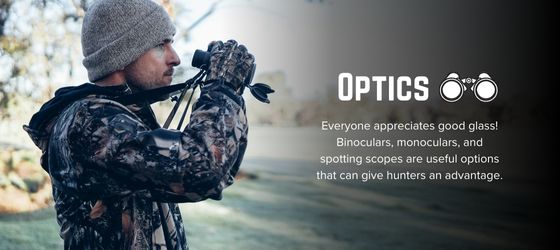 Few upgrades make as big a difference as quality glass. Whether spotting distant game or verifying antler characteristics, optics help hunters make better decisions afield. They also make wildlife-watching enjoyable year-round.
Few upgrades make as big a difference as quality glass. Whether spotting distant game or verifying antler characteristics, optics help hunters make better decisions afield. They also make wildlife-watching enjoyable year-round.
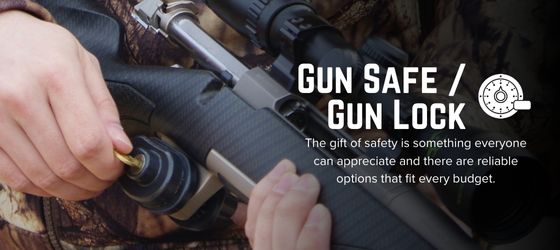 The gift of safety is invaluable. Gun locks, safes and secure storage options come in every size and budget—from compact travel locks to full-size safes. Safe storage protects both families and firearms.
Learn more in NSSF’s
The gift of safety is invaluable. Gun locks, safes and secure storage options come in every size and budget—from compact travel locks to full-size safes. Safe storage protects both families and firearms.
Learn more in NSSF’s  When in doubt, let them choose! A gift card to a local sporting goods retailer allows hunters to purchase the perfect item—and importantly, to do so legally when it comes to firearms or ammunition. Supporting local shops helps strengthen your community, too.
Find retailers near you through
When in doubt, let them choose! A gift card to a local sporting goods retailer allows hunters to purchase the perfect item—and importantly, to do so legally when it comes to firearms or ammunition. Supporting local shops helps strengthen your community, too.
Find retailers near you through 











